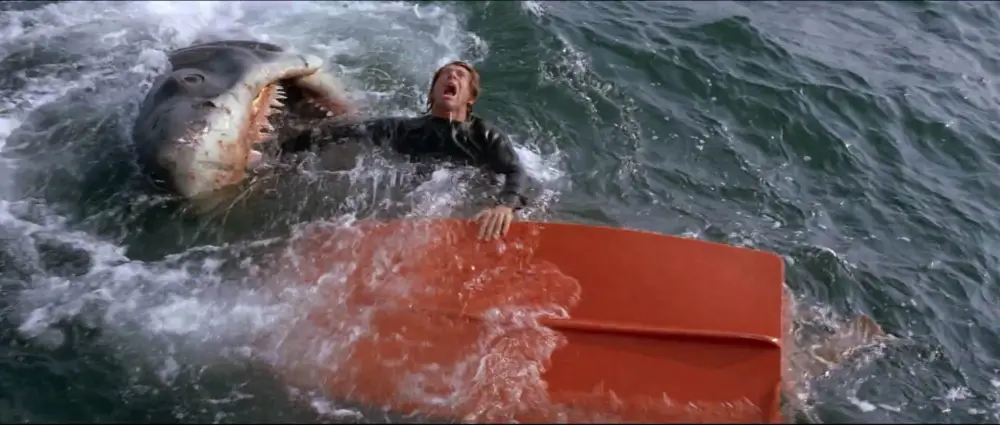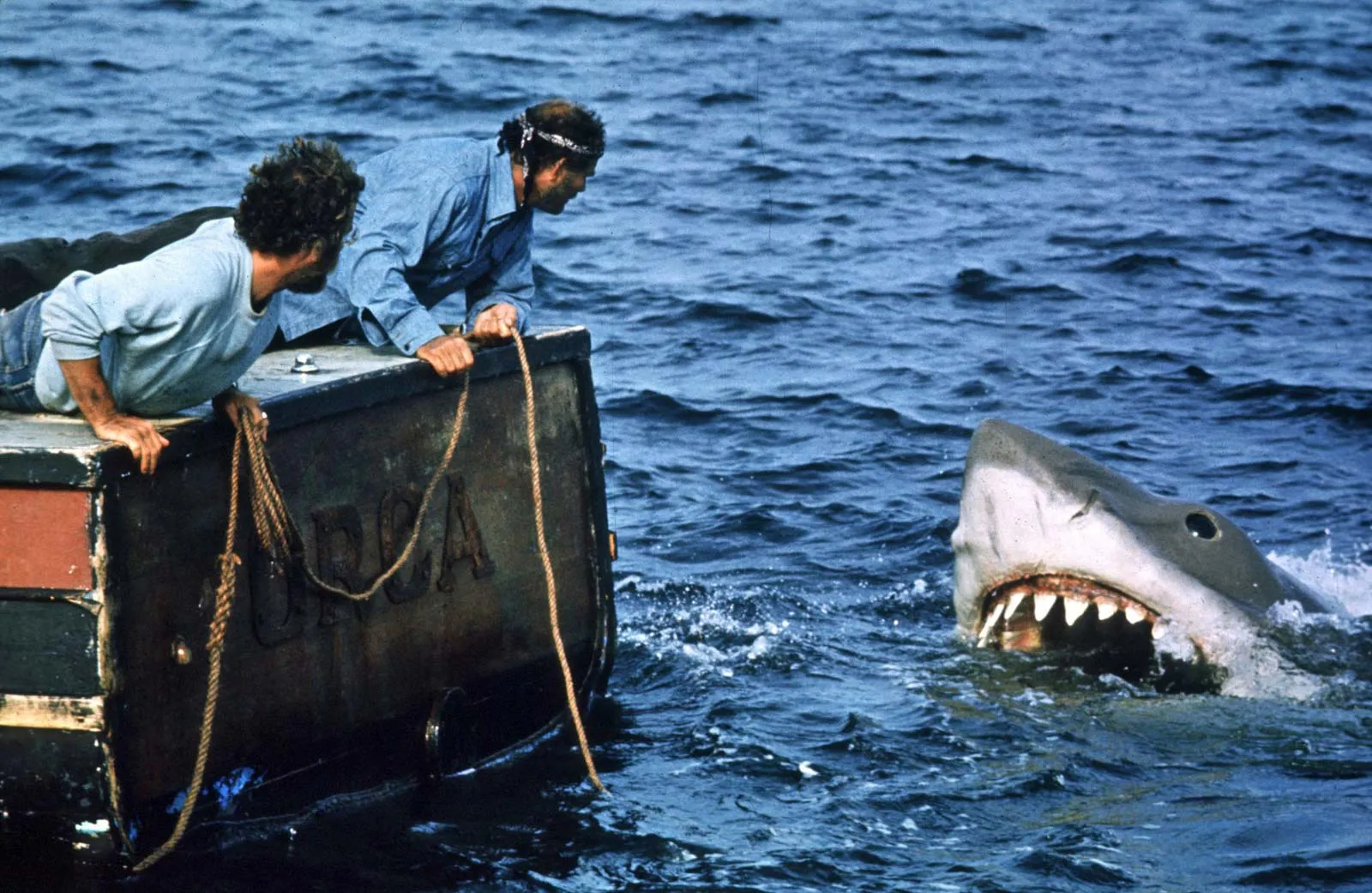Jaws (1975)

Directed by Steven Spielberg and based on Peter Benchley’s bestselling novel, Jaws (1975) remains one of the most influential thrillers in film history. Set in the idyllic yet sinister beach town of Amity Island, the film follows the struggle of a small-town police chief, Martin Brody (Roy Scheider), as he faces the terrifying reality of a great white shark that is preying on the residents and visitors of the island. Alongside him, an oceanographer, Matt Hooper (Richard Dreyfuss), and a seasoned shark hunter, Quint (Robert Shaw), join forces to track down the killer shark before it can strike again. What starts as a mysterious attack soon escalates into a heart-pounding race against time to save the town.

What to Expect
From the very first frames of Jaws, Spielberg’s masterful direction hooks the audience with an unparalleled sense of suspense. The tension begins with a simple, yet terrifying premise—an unseen predator stalking its victims in the depths of the ocean. The iconic opening scene, where a swimmer is attacked by the unseen shark, sets the tone for the entire film, slowly building dread while never fully revealing the monster. Spielberg brilliantly uses the limitations of the shark’s on-screen appearance (due to mechanical malfunctions) to create an even more effective sense of fear, leaving much to the imagination and allowing the audience to feel the terror through the characters’ reactions and the eerie silence of the ocean.
One of Jaws’ greatest triumphs is its ability to combine character-driven storytelling with relentless suspense. The bond that forms between Brody, Hooper, and Quint adds a unique layer of humanity to the film. Brody, the everyman who is terrified of the ocean, must find the courage to face his fears, Hooper, the intellectual, brings scientific knowledge to the table, and Quint, a grizzled fisherman with a haunted past, provides the primal energy needed to hunt the beast. Their interactions offer moments of humor, camaraderie, and even tragedy, making the film more than just a thriller but a story about human survival and heroism.

The film’s pacing is impeccable—building suspense in the first half with a series of attacks that escalate in frequency and intensity, then culminating in the unforgettable battle aboard Quint’s boat, the Orca. The final act is a nerve-wracking showdown that solidifies Jaws as a true cinematic landmark.
John Williams’ Oscar-winning score is perhaps one of the most recognizable in film history, with the simple, yet haunting two-note motif (“da-dum, da-dum”) forever associated with the lurking menace beneath the surface. Williams’ music becomes a character in itself, signaling the presence of danger even when the shark is not in sight.
Tombstone excels in world-building, from the sun-drenched landscapes to the gritty saloons and the constant sense of danger lurking in the streets. It encapsulates the essence of the Old West – a time when the rule of law was often defined by the fastest gun and the strongest will. The tension between law and chaos is a central theme, and the film brings these elements to life with powerful imagery and memorable characters.
Related Movies:











